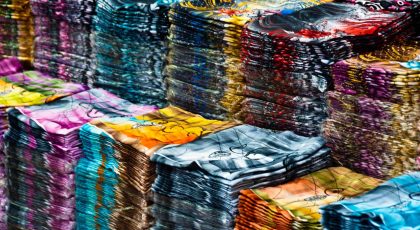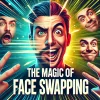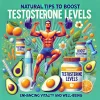What adjustments can a shop make to sell more products – without drastically changing the shop concept, layout or products?
There have been literally thousands of studies on how specific shopping factors can influence our buying behaviour in subtle but powerful ways. On the one hand, behavioural science publishes plenty on consumer psychology, behavioural economics and consumer neuroscience. Literally every week, cool new insights come to light.
Specialised research agencies are not standing still either. At Unravel, for instance, we do plenty of research into buying behaviour through brain research (EEG) and Eye Tracking, both in real and simulated sales environments.
In this blog, we share 5 surprising and directly applicable insights to better serve customers psychologically as a physical retail shop.
By the way, the other day we gave a – free – lunch webinar exactly about this. We dived into the psychological techniques that can make the difference. You learned in this webinar how to create an environment that more effectively attracts, retains, activates desire and focuses their preferences on the most margin-rich products.
Since you are reading this blog, I thought you will absolutely love this webinar! Watching back is very simple via this link. I look forward to hearing what you thought!
- Eye height is not buying height
Forget the age-old motto ‘Eye height is buying height’. If there is one viewing pattern we see confirmed in each of our studies, it is that people rarely rest their neutral viewing position at eye level. And this is not surprising, as constantly looking at eye level is certainly no fun for your neck.
Eye Tracking measures exactly where shoppers direct their attention by measuring where their eyes are focused several times a second. When people walk through a shop and let their eyes glide along the assortment, they do not initially look at eye level. Instead, people draw their attention just a little lower. Apparently, we mainly like products we can easily reach with our hands.
So: do you have an important product (high margin or a signpost function)? Then don’t put it at eye level. Place these products one shelf lower: at hand height. Then you know you are jumping into the natural field of vision to the max.
By the way, want to read more about the psychology of shelf layout? Then read our blog “Scoring With Your Shelf: Neuromarketing Tips for a Successful Shelf Plan”.
- Where do you place the price? On the left or on the right?
It may seem irrelevant, but against which margin do you place the price on the price tag? Research has shown that this is not as arbitrary as you might initially think. In fact, price position has been found to have a major impact on how we subconsciously feel about a deal. We talked about this earlier in “How Two Psychologists Make the Cash Boxes in New York Museums Ring Like Never Before”.
When a price is on the left, an association with affordability is immediately triggered. This effect becomes even stronger when the product is a bargain anyway. A price on the left-hand side makes the deal even more irresistible and therefore more likely to end up in the shopping basket.
For luxury, premium or high-quality products, we see the opposite effect. These products actually benefit when the price is on the right-hand side. Because such a price is associated with more expensive, valuable products, we are happy to spend a bit more.
- Why similar products should not have the same price
Imagine: you are standing in the souvenir shop of a museum and trying to choose between two mugs of €4.75 each. Which one do ke? This decision is often so difficult that consumers are likely to go for a third option: buy nothing.
There is one extremely simple method to counter this flight strategy when they have to choose between two similar options: make the choice easier by introducing a price difference.
Free Webinar: Target your Store to the Unconscious 🧠
In this webinar, we dive into the psychological techniques that can make a difference. Learn how to create an environment that more effectively attracts people, retains them, activates desire and focuses their preferences on the most margin-rich products. In short: how do you turn a visitor into a buying customer?
The 52-minute webinar is now available to watch back!
Watch the webinar via this link <
Sell one mug for €4.70 and one for €4.80, instead of pricing both at €4.75. When people cannot make a choice on external features of the mug (such as colour), it allows them to base their choice on a mental rule of thumb like “I always choose the cheapest/most expensive option”.
- A small tweak to double the effect of discounting
The classic design of a discount ticket follows a certain pattern: the old price is often executed a small font and stands out minuscule against the new price – which is depicted in big, bold letters.
From a consumer psychologist’s perspective, there is a lot of room for improvement on such a promo. Literally. Cognitive psychologists have known for decades that physical concepts automatically trigger emotions that are linked in the brain. For example, when a shopper gives you a hot drink, you immediately find him more sympathetic (warmer) than someone who gives you a cold drink.
In the context of prices, consumer psychologists have found that physical distance and font size both have similar effects on how consumers perceive the discount. Research has shown that:
When the physical distance between the old price and the new price is greater, the difference also feels greater. So increase the distance between the two prices to automatically evoke the feeling of a good deal.
When the old price is depicted larger than the new price, the difference between the prices appears larger. Large>small creates a significant price reduction for our senses; small>large has the opposite effect.
- The perfect sign
Shop signs often contain both text and images. How you combine these elements turns out to have a significant impact on the appeal of signs. So does the ease with which one can process the information.
The human brain has two hemispheres, also called hemispheres. The left hemisphere specialises in processing individual pieces of information (“the logical brain”). The right hemisphere is more concerned with the overall picture (“the creative brain”).
The nerves from our eyes run crosswise to the brain. This means that the left visual field enters the right hemisphere; the right visual field enters the left hemisphere. Because of this specialised processing, our brain has an innate preference for text and images:
images in the left visual field
text in the right visual field
Multiple field studies have shown that information (such as signs in shops or advertisements) gets more attention when the information displayed matches what is processed in the brain hemisphere. So: pictures on the left, text on the right.
Want more retail psychology techniques?
This blog was written by Unravel. Unravel is the agency that has combined knowledge of psychology and neuroscience. We were the first to bring this approach to the retail and leisure industry in the form of our systematic Psychological Shopping Scan.
Small adjustments make a big difference. Are you interested in how your shop can increase sales with our psychological, research-based approach, product reviews? Get in touch.






